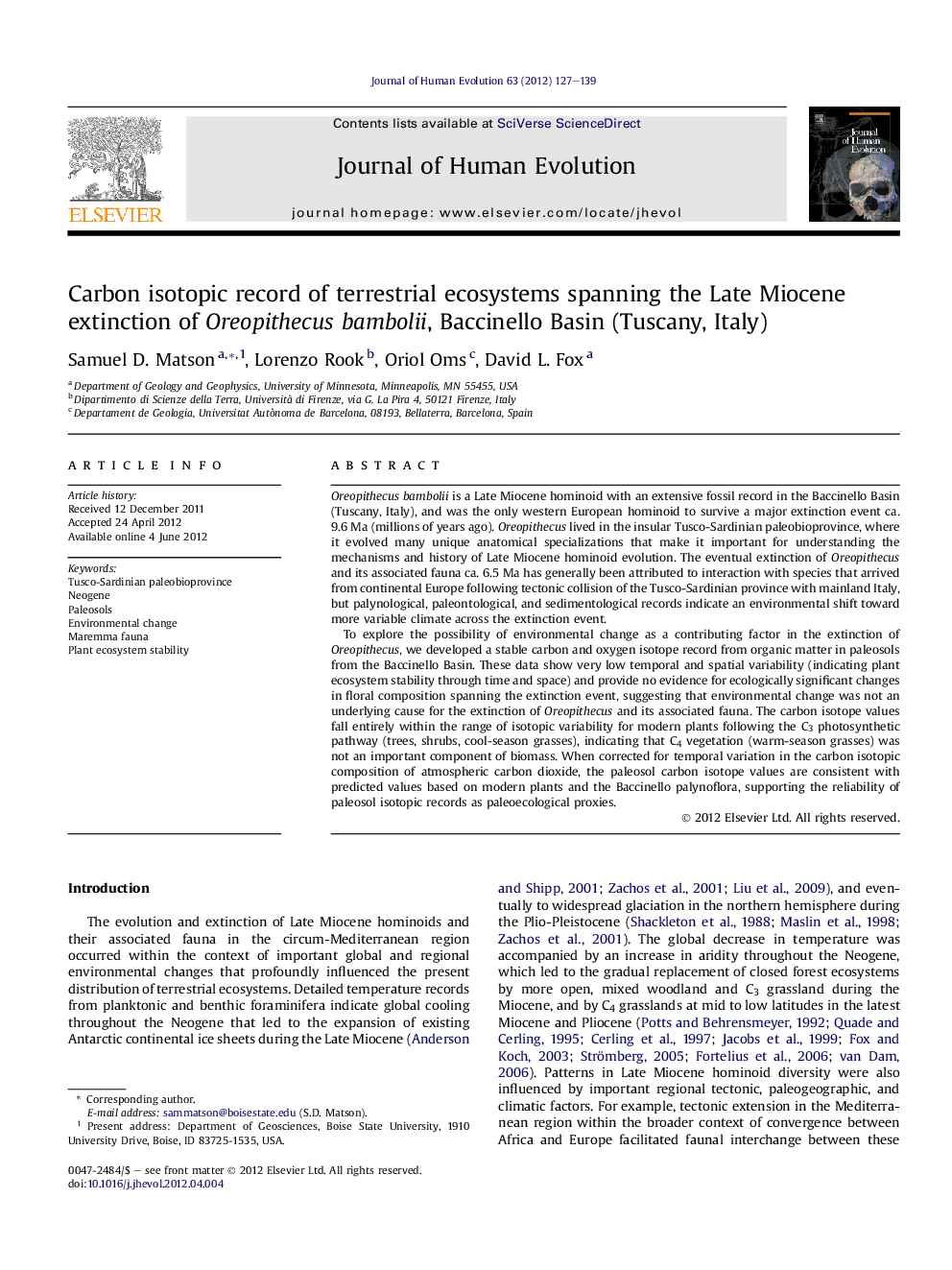| کد مقاله | کد نشریه | سال انتشار | مقاله انگلیسی | نسخه تمام متن |
|---|---|---|---|---|
| 4556489 | 1329483 | 2012 | 13 صفحه PDF | دانلود رایگان |

Oreopithecus bambolii is a Late Miocene hominoid with an extensive fossil record in the Baccinello Basin (Tuscany, Italy), and was the only western European hominoid to survive a major extinction event ca. 9.6 Ma (millions of years ago). Oreopithecus lived in the insular Tusco-Sardinian paleobioprovince, where it evolved many unique anatomical specializations that make it important for understanding the mechanisms and history of Late Miocene hominoid evolution. The eventual extinction of Oreopithecus and its associated fauna ca. 6.5 Ma has generally been attributed to interaction with species that arrived from continental Europe following tectonic collision of the Tusco-Sardinian province with mainland Italy, but palynological, paleontological, and sedimentological records indicate an environmental shift toward more variable climate across the extinction event.To explore the possibility of environmental change as a contributing factor in the extinction of Oreopithecus, we developed a stable carbon and oxygen isotope record from organic matter in paleosols from the Baccinello Basin. These data show very low temporal and spatial variability (indicating plant ecosystem stability through time and space) and provide no evidence for ecologically significant changes in floral composition spanning the extinction event, suggesting that environmental change was not an underlying cause for the extinction of Oreopithecus and its associated fauna. The carbon isotope values fall entirely within the range of isotopic variability for modern plants following the C3 photosynthetic pathway (trees, shrubs, cool-season grasses), indicating that C4 vegetation (warm-season grasses) was not an important component of biomass. When corrected for temporal variation in the carbon isotopic composition of atmospheric carbon dioxide, the paleosol carbon isotope values are consistent with predicted values based on modern plants and the Baccinello palynoflora, supporting the reliability of paleosol isotopic records as paleoecological proxies.
Journal: Journal of Human Evolution - Volume 63, Issue 1, July 2012, Pages 127–139